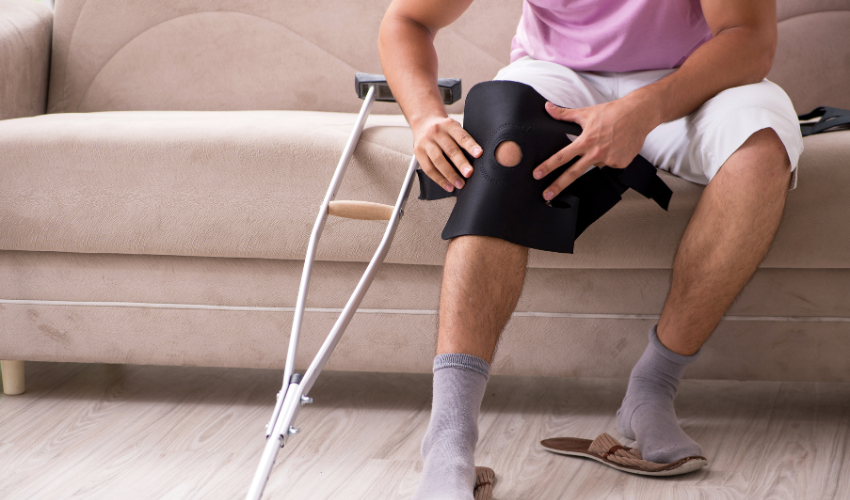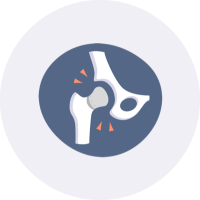As the weather warms up and we shake off the winter chill, spring brings a fresh opportunity to refocus on your health and wellbeing.
Undergoing surgery and wanting to make a smooth, speedy recovery can feel overwhelming. When thinking about post-surgery care, one crucial aspect often comes into question: should you exercise?
The idea of moving your body after surgery can feel daunting, especially if you’re not used to a regular fitness routine. But is exercise really necessary? And if so, when should you start?
Let’s break down these questions, address some concerns and see how the right kind of exercise can make a difference in your recovery.
Post-surgery recovery: How exercise can help
Exercise plays a vital role in our lives — it improves blood circulation, revitalises our organs, clears dead cells and boosts our immune system. By working our muscles, we strengthen them and repair tissues and tendons, keeping our bodies functioning at their best.
After surgery, it's important to incorporate safe exercises as your body has just undergone a significant amount of stress, so gentle and controlled movements are essential. You don’t need to run a marathon or lift heavy weights—safe exercises following surgery are important for your recovery plan.
With so much advice on when and how to start moving after surgery, it can be overwhelming. To help you navigate this, let’s focus on the key points about post-surgery exercise.
You should wait for the pain to go away before starting rehabilitation
It's common to think that exercise should be put on hold until all pain has subsided. However, this isn't always the best approach. Pain is often a part of the healing process and waiting until it's completely gone can result in unnecessary delays.
Safe exercises following surgery are important for your recovery plan. Work with your surgeon and a health professional who can guide you with the best recovery practices suited to your surgery.
Our Silver+ Hospital Essentials, Silver+ No Pregnancy Hospital, Silver+ Family Hospital and Gold Hospital products offer coverage for hospital-based rehabilitation treatments and services.
Physiotherapy can wait until the post operative stage
Some assumed physiotherapy can be delayed until later stages of recovery, but early intervention can provide considerable benefits such as reducing scar tissue, improving mobility and speeding up overall recovery. In fact, many surgeons now recommend prehab (rehabilitation before surgery) to improve surgical outcomes, especially for joint replacements.
Our extras products provide generous benefits for physiotherapy services to expedite your healing process, as well as other therapies such as massage and myotherapy.
Rest and avoid all painful activities
While rest is important following surgery, complete inactivity can have negative effects. Prolonged immobility can lead to muscle weakness, joint stiffness and even increase the risk of complications such as blood clots or decreased circulation.
Contrary to the belief that avoiding all discomfort is beneficial, engaging in approved exercises can help mitigate these problems and help you regain full function as quickly and safely as possible.
Reintroducing exercise after surgery
Before starting any rehabilitation plan, it’s crucial to speak with your specialist and physiotherapist, as every recovery is unique. The type of surgery you’ve had will influence when and how you can safely begin exercising, and they will help tailor a plan specific to your needs.
Here’s an overview of some common procedures and how reintroducing physical activity into your routine can play a key role in your recovery.
Orthopaedic surgery – Knee recovery surgery: Knee surgeries, such as replacements or reconstructions, often require early mobilisation. Exercise and movement are key for recovery. Once you’re discharged, your physiotherapist will recommend ongoing exercises to strengthen and improve mobility.
Orthopaedic surgery – Hip recovery surgery: After hip replacement surgery, early movement is crucial to restoring function and reducing the risk of complications like blood clots. Gentle exercises, such as heel and ankle movements, can improve circulation and strengthen surrounding muscles. Your physiotherapist will guide you through the best exercises to ensure you're moving safely.
Bariatric surgery recovery: Following bariatric surgery, low-intensity activities like walking can support your healing process without overloading the surgical site. These light exercises are beneficial for improving circulation and gradually rebuilding strength. Your doctor will provide guidance on when to introduce more challenging exercises to rebuild abdominal strength and support overall health.
Childbirth recovery: Recovery from childbirth varies based on the delivery method. If you had an uncomplicated pregnancy and natural delivery, light activities such as walking can boost blood flow. For caesarean sections or complicated deliveries, recovery plans are more individualised and it’s essential to follow your healthcare provider’s specific recommendations.
Moving forward with your recovery plan
The aim of post-surgery exercise isn’t to push yourself too hard, but to support your body’s natural healing process.
If you have recently been discharged from hospital and have complex health needs, our Care Coordinator team can assist you in navigating health care services and finding the right support*.
At Union Health, we’re committed beyond simply providing health insurance- we're here to support your health journey. If you’d like to learn more about how we can assist you, chat with us today!
*Product eligibility criteria may apply.
This information is general in nature and not intended to replace the advice given by your medical practitioner.























